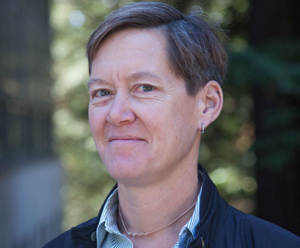For most of my teaching career, I knew it was time to think about my Fall courses when I could no longer postpone turning in my book order. When the inevitable couldn’t be put off for one more day, I’d take out a piece of paper, put a date for each class meeting in the left hand margin, and agonize over which texts to read and how many days to spend on each. I’d toss in a couple of paper deadlines (not planning the actual assignments) at reasonably spaced intervals—largely dependent on the time it would take me or my TAs to grade the work and return it to students in advance of the next paper. Then I’d decide whether to give a final exam or a final paper or project. Then I’d type up the whole “syllabus,” order the books, and I’d be ready to go.
That was what “designing a course” meant to me for more than two decades.
Now, given that I had never received any training in designing courses, there’s nothing all that surprising or particularly reprehensible about this approach. I was just designing the kind of classes I had taken as an undergraduate and graduate student. I had not only never read anything on the topic of course design—I had no idea course design was something people read or write about, research, learn, and help others to learn. My course design and delivery were a reflection of what one fantastic new book on college teaching describes in its title as the Missing Course—that is, the one you never took in graduate school on how to design and teach college courses.
The good news is that there are better ways to design a course than mine. The really good news is that support and advice in planning and designing your courses and syllabi is easily available to you, and it’s all accessible from your office or home. If you prefer to have your questions about teaching answered directly, you’re welcome to email the Center for Innovations in Teaching and Learning (citl@ucsc.edu) for an email or in-person consultation. Otherwise, there is a vast array of resources available at the touch of a few keystrokes.
CITL has a website of teaching resources prepared or selected by UC Santa Cruz instructors for UC Santa Cruz instructors. Among the many resources you’ll find there are:
- tools for identifying and articulating what you want students to learn in your course
- step by step instructions on how to design or redesign a course or an assignment once you know what you want students to learn
- sample language you can adapt for your syllabus such as academic integrity statements or statements about inclusivity and accessibility
- design tips for making a syllabus your students will actually read and use
- comprehensive resources on how to use universal design for learning and inclusive teaching practices to create courses that have the best chance of closing equity gaps for our students
In addition to materials immediately relevant to course design, there are entire online archives of ways to increase student engagement and foster active learning once the quarter starts, tips for encouraging lively discussions, and advice on how to manage difficult conversations and navigate “hot topics.” If you’ve done enough reading for the day, we have recently added a library of videos of UCSC faculty giving short (5-7 minute) talks on topics ranging from how to encourage active learning in lecture courses to how to curate inclusive office hours or talk with your TAs about inclusivity.
Beyond what CITL has collected on its website, the higher education press is teeming at this time of year with genuinely useful advice by and for college instructors on the topic of teaching well. There’s something sweet about the desire faculty members seem to be exhibiting right now to share what they’ve learned about how to better support student learning, and it’s worth poking around to see what’s out there.
One particularly great piece I found this week included a long list of easy-to-implement techniques for promoting student engagement from longtime instructors of large lecture courses. One of the best ones there: ask students to say their name when they contribute to the discussion or ask a question in a large lecture course, and refer back to the student by name later in the class. Rather than having to learn 500 names, you just have to learn 6 or 8 per class, yet all students come away feeling that you care even a little bit about who is actually filling those seats.
For the first time this year, CITL is providing targeted programs for new instructors at all levels. New Teaching Assistants will take an online TA Ethics course that provides an outstanding introduction to many issues all instructors face, from power and privilege in the classroom to academic integrity and fostering inclusion and accessibility. Faculty members interested in having a closer look can contact your department graduate advisor to gain access to the course. CITL is also offering a two-day Teaching Academy for new and nearly new faculty, held in the week before classes begin, that will help to introduce recently hired faculty to our students and prepare them as they make the transition to teaching at UC Santa Cruz.
If all of this seems overwhelming, the point is really fairly simple: whether you just arrived or you’ve been here for decades, there are resources, colleagues, and support staff available to help you get ready for teaching this Fall. When it comes to teaching, no matter what it seemed like in graduate school (or at UC Santa Cruz until pretty recently), you really don’t have to go it alone.



